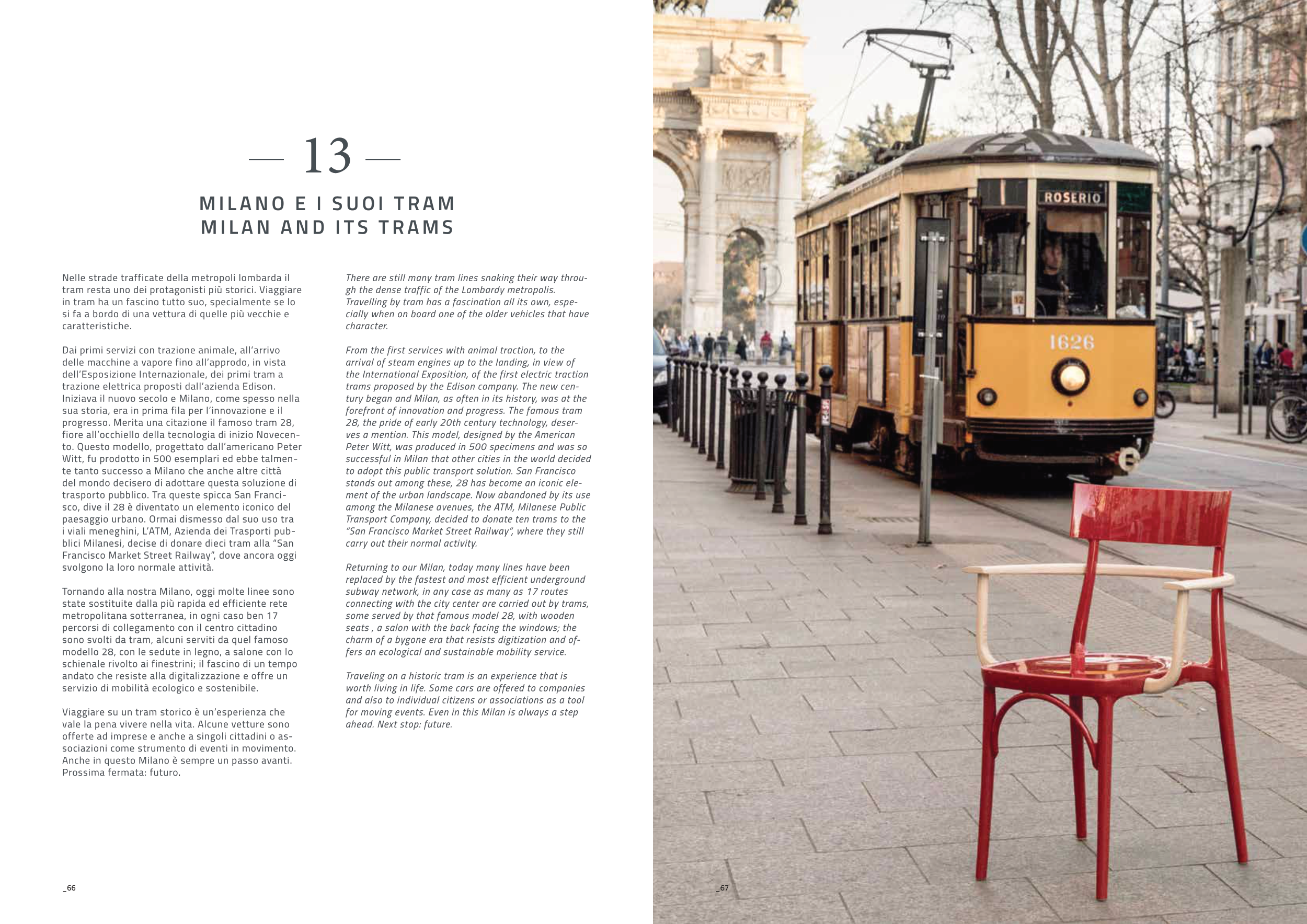13
M I L a N O E I s u O I T R a M
M I L a N a N D I T s T R a M s
There are still many tram lines snaking their way throu-
gh the dense traffic of the Lombardy metropolis.
Travelling by tram has a fascination all its own, espe-
cially when on board one of the older vehicles that have
character.
From the first services with animal traction, to the
arrival of steam engines up to the landing, in view of
the International Exposition, of the first electric traction
trams proposed by the Edison company. The new cen-
tury began and Milan, as often in its history, was at the
forefront of innovation and progress. The famous tram
28, the pride of early 20th century technology, deser-
ves a mention. This model, designed by the American
Peter Witt, was produced in 500 specimens and was so
successful in Milan that other cities in the world decided
to adopt this public transport solution. San Francisco
stands out among these, 28 has become an iconic ele-
ment of the urban landscape. now abandoned by its use
among the Milanese avenues, the ATM, Milanese Public
Transport Company, decided to donate ten trams to the
“San Francisco Market Street railway”, where they still
carry out their normal activity.
returning to our Milan, today many lines have been
replaced by the fastest and most efficient underground
subway network, in any case as many as 17 routes
connecting with the city center are carried out by trams,
some served by that famous model 28, with wooden
seats , a salon with the back facing the windows; the
charm of a bygone era that resists digitization and of-
fers an ecological and sustainable mobility service.
Traveling on a historic tram is an experience that is
worth living in life. Some cars are offered to companies
and also to individual citizens or associations as a tool
for moving events. Even in this Milan is always a step
ahead. next stop: future.
Nelle strade trafficate della metropoli lombarda il
tram resta uno dei protagonisti più storici. Viaggiare
in tram ha un fascino tutto suo, specialmente se lo
si fa a bordo di una vettura di quelle più vecchie e
caratteristiche.
Dai primi servizi con trazione animale, all’arrivo
delle macchine a vapore fino all’approdo, in vista
dell’esposizione Internazionale, dei primi tram a
trazione elettrica proposti dall’azienda edison.
Iniziava il nuovo secolo e Milano, come spesso nella
sua storia, era in prima fila per l’innovazione e il
progresso. Merita una citazione il famoso tram 28,
fiore all’occhiello della tecnologia di inizio Novecen-
to. Questo modello, progettato dall’americano Peter
Witt, fu prodotto in 500 esemplari ed ebbe talmen-
te tanto successo a Milano che anche altre città
del mondo decisero di adottare questa soluzione di
trasporto pubblico. Tra queste spicca San Franci-
sco, dive il 28 è diventato un elemento iconico del
paesaggio urbano. ormai dismesso dal suo uso tra
i viali meneghini, L’ATM, Azienda dei Trasporti pub-
blici Milanesi, decise di donare dieci tram alla “San
Francisco Market Street Railway”, dove ancora oggi
svolgono la loro normale attività.
Tornando alla nostra Milano, oggi molte linee sono
state sostituite dalla più rapida ed efficiente rete
metropolitana sotterranea, in ogni caso ben 17
percorsi di collegamento con il centro cittadino
sono svolti da tram, alcuni serviti da quel famoso
modello 28, con le sedute in legno, a salone con lo
schienale rivolto ai finestrini; il fascino di un tempo
andato che resiste alla digitalizzazione e offre un
servizio di mobilità ecologico e sostenibile.
Viaggiare su un tram storico è un’esperienza che
vale la pena vivere nella vita. Alcune vetture sono
offerte ad imprese e anche a singoli cittadini o as-
sociazioni come strumento di eventi in movimento.
Anche in questo Milano è sempre un passo avanti.
Prossima fermata: futuro.
_66
_67


